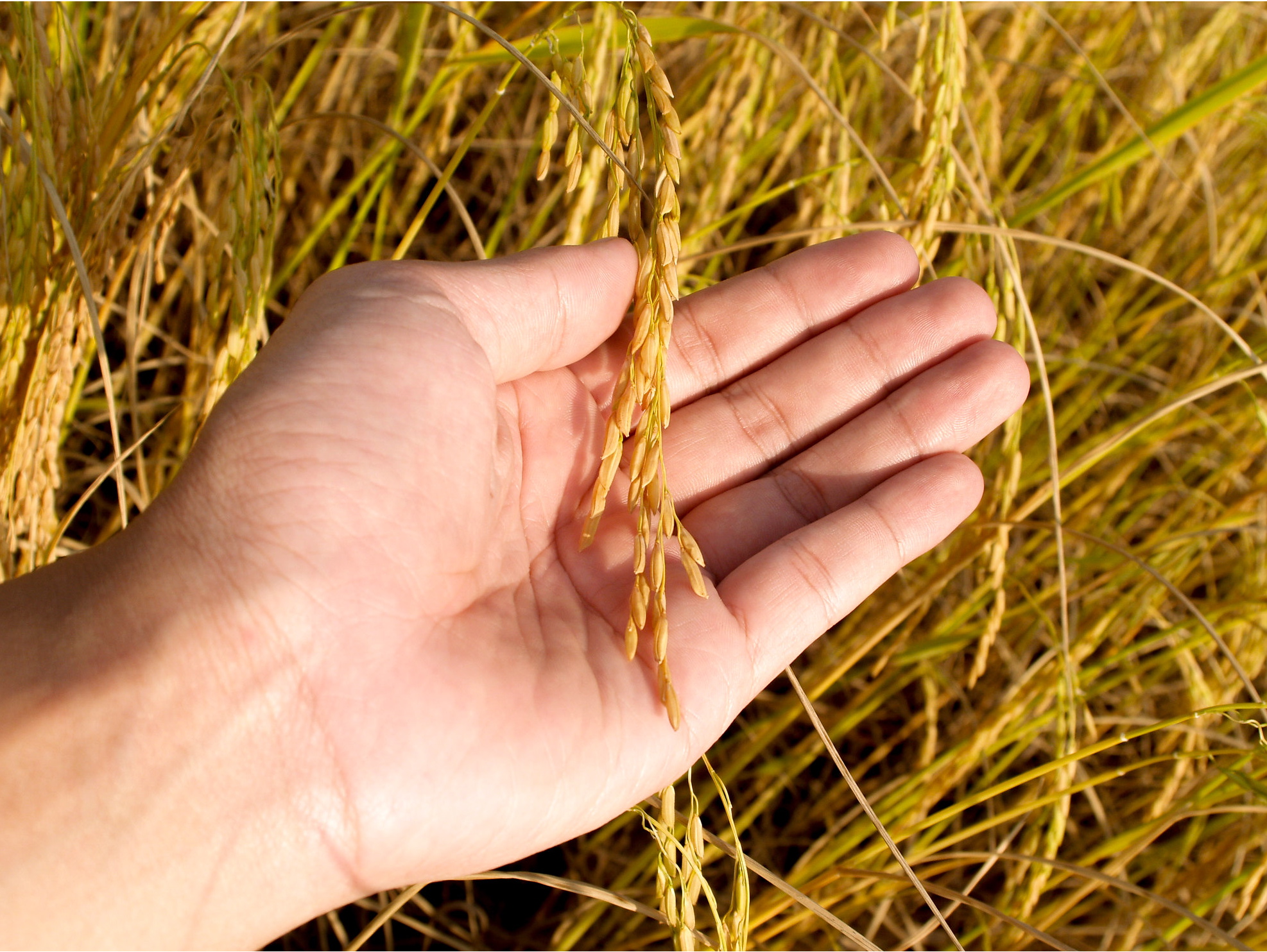Golden Rice rolling out in 7 provinces

YEARS IN THE MAKING The International Rice Research Institute (Irri) spent two decades with PhilRice to develop Golden Rice, which is touted to be helpful in preventing childhood blindness and malnutrition. Environmental groups, however, have strongly opposed the effort. —Isagani Serrano/IRRI
MANILA, Philippines — The genetically modified Golden Rice, a variety enriched with nutrients, is finally ready for planting in farms in seven provinces with a high incidence of malnutrition and stunting.
Reynante Ordonio, senior science research specialist at the Philippine Rice Research Institute (PhilRice), said on Thursday that seeds of Golden Rice would be distributed in Quirino and Catanduanes in Luzon, Samar and Antique in the Visayas and Lanao del Norte, Agusan del Sur and Maguindanao in Mindanao.
PhilRice, a corporate entity attached to the Department of Agriculture (DA), has also committed to give the first seeds to Batac in Ilocos Norte and Nueva Ecija for helping facilitate the testing of Golden Rice.
Golden Rice was developed by PhilRice in partnership with the International Rice Research Institute (Irri) to contain additional levels of beta carotene, which the body converts into vitamin A.
Around one in five children from the poorest communities in the country suffer from vitamin A deficiency (VAD), the most common cause of childhood blindness and contributes to a weakened immune system.
Article continues after this advertisementSince it weakens the body’s resistance to diseases and infections, it may even result in death if left untreated.
Article continues after this advertisementSeed certification
In the Philippines, 2 million Filipino children under the age of 5 have VAD, based on the 2018 Expanded National Nutrition Survey of the Department of Science and Technology-Food and Nutrition Research Institute.
Golden Rice is expected to provide up to 50 percent of the estimated average requirement for vitamin A of young children, the age group most susceptible to VAD in the Philippines.Ordonio said Golden Rice has been successfully registered with the National Seed Industry Council (NSIC), considered a key step as this allows the deployment of Golden Rice not only to farmers but more importantly to seed producers and seed growers.
PhilRice is hoping to start planting Golden Rice at the start of the wet season in an initial 9 hectares.
“Next will be the pilot deployment of Golden Rice which is now being planned and being done also because we have already reached out to the target provinces and to the (local government units) and it’s much easier now that it is already registered,” said Ordonio in a virtual media tour organized by the US Department of Agriculture Foreign Agricultural Service in Manila and the US Embassy in Dhaka, Bangladesh, in collaboration with Farming Future Bangladesh.
“Before we go to the actual deployment (for commercial production), there is still the next phase which is seed certification. That’s under the purview of NSQCS (National Seed Quality Control Services) and we’re still coordinating with them exactly when will be the planting for commercial purposes be done or would be possible,” he added.
Long process
Ordonio said commercial sale of Golden Rice would not start yet since PhilRice would need first to produce the basic seeds.
“We’re still at that phase when we are increasing the seeds and we’re ensuring the quality and the purity,” he said.
The permit for the commercial production of Golden Rice was given in July last year by the Bureau of Plant Industry, another agency attached to the DA, making it the first genetically modified rice approved for commercial propagation in South and Southeast Asia.
Irri spent two decades with PhilRice to develop Golden Rice, an enhanced version of ordinary rice that is touted to be helpful in preventing childhood blindness and malnutrition.
Environmental groups have strongly opposed the development of Golden Rice. Activists attacked at least one test field for genetically modified rice in Pili, Camarines Sur province, in 2013.
Golden Rice was first developed in 1999 by Ingo Potrykus, a professor of the Swiss Federal Institute of Technology, and Peter Beyer of University of Freiburg, Germany, who began their research on Golden Rice in 1982.
In 2004, the Golden Rice technology was donated to the Golden Rice Humanitarian Board, which transferred it to developing countries where vitamin A deficiency is prevalent, including the Philippines. —With a report from INQUIRER RESEARCH
RELATED STORY:
Philippines approves GMO ‘golden rice’ for commercial production